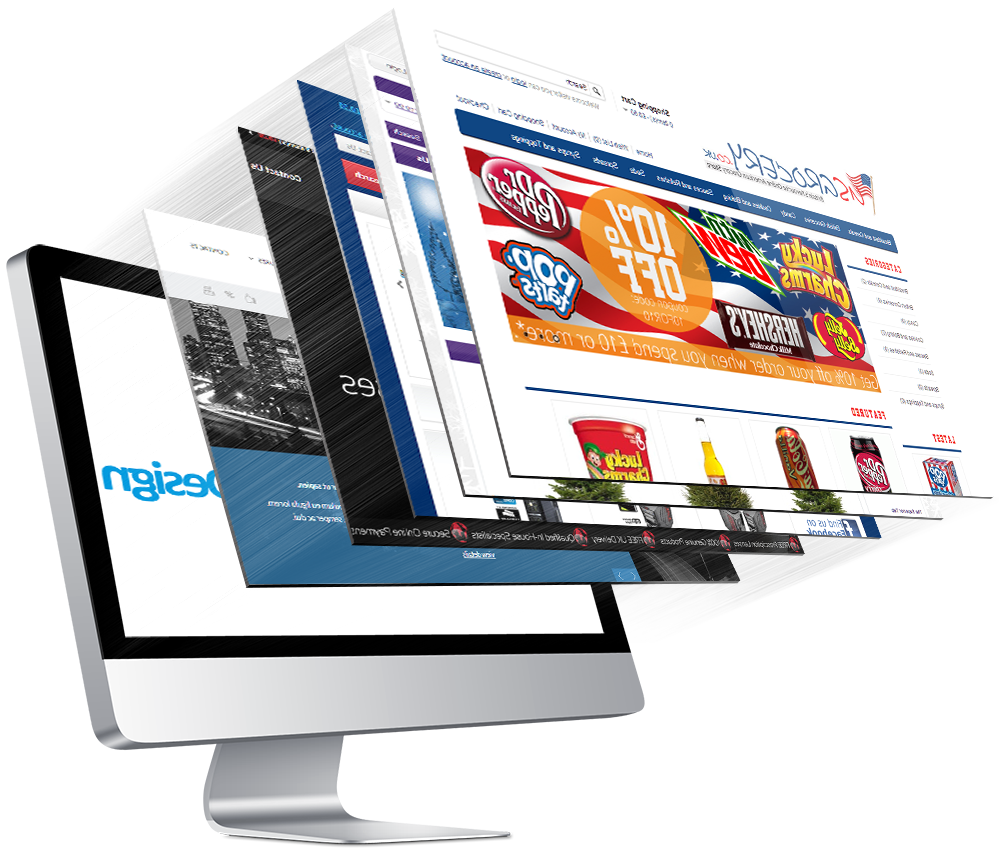Website Design London Ontario Designed Around User Experience
Website Design London Ontario Designed Around User Experience
Blog Article
Understanding the Crucial Element That Make up Reliable Website Design Methods
When it pertains to website design, recognizing the vital components can make all the distinction in user engagement and complete satisfaction. You need to ponder facets like instinctive navigation and receptive style to develop a seamless experience. That's just the begin. Each element plays an essential function in guiding customers through your web content and affecting their habits. Interested about what really drives these approaches? Let's discover deeper right into these important elements.
The Importance of Customer Experience (UX) in Web Design
Individual experience (UX) is the foundation of efficient internet design, forming how site visitors interact with your site. When you focus on UX, you create an area where customers feel comfy, involved, and valued. A well-designed UX warranties that your audience can quickly browse your content, discover details rapidly, and appreciate their general experience.You has to consider your users' requirements and preferences, as this understanding directly affects their contentment. By concentrating on elements like tons times, mobile responsiveness, and availability, you enhance their experience considerably.Moreover, a favorable UX promotes trust and motivates repeat brows through, which can lead to higher conversion rates. Bear in mind, users will not wait to leave your website for a competitor if they come across aggravation or complication. Inevitably, spending in UX isn't practically aesthetics; it's regarding developing a user-centric design that keeps site visitors returning for more.
Crafting Intuitive Navigation for Seamless Browsing
When designing a website, crafting instinctive navigating is crucial for guaranteeing visitors can find what they need without stress. Start by organizing your content practically; team relevant web pages with each other to aid customers anticipate where to discover info. Use clear, concise labels for navigating web links, preventing jargon that might confuse your audience.Consider implementing a hierarchical framework with a primary menu and dropdowns for subcategories, making it easy to drill down right into certain topics. Integrate a search bar to empower customers to locate material directly, especially on bigger sites.Don' t ignore mobile users; determine your navigating continues to be easily accessible on smaller displays. Keep it constant and easy throughout all web pages to reinforce knowledge. By concentrating on these elements, you'll create a smooth browsing experience that maintains visitors involved and encourages them to discover more of what you need to use.
Responsive Design: Adapting to Different Instruments
As the selection of tools people use to access the internet remains to grow, guaranteeing your website is responsive has actually never ever been extra vital. A responsive layout implies your website adapts perfectly to various screen dimensions, from smartphones to desktop computers, offering a premium viewing experience. This flexibility not only improves customer fulfillment but likewise enhances your site's performance in internet search engine rankings.To create a receptive layout, use versatile grids and formats that automatically get used to the display's measurements. Carry out CSS media queries to personalize designs based upon device qualities. Focus on crucial content, ensuring it's quickly obtainable on smaller sized screens without overwhelming users.
The Function of Visual Pecking Order in Effective Layouts
Visual pecking order is crucial for guiding your audience's attention where it matters most. By successfully utilizing prime focus, typography, shade, and contrast, you can develop a layout that interacts your message plainly. Let's explore exactly how these elements work with each other to enhance your layout.
Relevance of Focal Things
Prime focus are necessary in website design, assisting individuals' interest to one of the most crucial elements on a web page. By tactically placing these focal points, you develop a clear aesthetic hierarchy that boosts individual experience. Think of what you want your visitors to see initially-- whether it's a call-to-action button, a crucial photo, or significant information.Using comparison, size, and positioning, you can draw interest to these focal factors, making them attract attention. Bear in mind, the much more popular the centerpiece, the more probable customers are to involve with it. A properly designed format not only catches rate of interest yet also leads customers via your content effortlessly, guaranteeing they soak up the details that matters most. Prioritizing prime focus is crucial for effective communication on your site.
Shade and Comparison Use
Reliable use color and comparison can considerably affect exactly how customers view your internet site's web content. By choosing a color scheme that aligns with your brand, you produce a psychological connection with visitors. High comparison in between text and history enhances readability, guaranteeing your message attracts attention. Use contrasting colors to highlight essential aspects, like call-to-action buttons, directing customers' attention where it matters most.Additionally, balance is vital; excessive comparison can be overwhelming, while too little might provide your material unnoticeable. Implementing an aesthetic pecking order with color assists customers browse your site with ease. You desire them to quickly identify in between headings, subheadings, and body message, which boosts their total experience. Ultimately, efficient color and comparison usage maintains users engaged and urges them to explore further.
Typography's Effect on Style
While it's very easy to ignore, typography plays a crucial function in forming your site's style and total user experience. It develops a visual power structure that overviews visitors via your material. By selecting the best typefaces, dimensions, and designs, you can highlight essential info and develop a smooth flow. For instance, making use of bigger headings assists individuals swiftly identify areas, while smaller sized body text supplies in-depth understandings without overwhelming them. Consistent typography not just enhances readability however also strengthens brand name identification. Remember to stabilize decorative typefaces with clarity to keep professionalism. Ultimately, reliable typography guarantees your message resonates, making your web site extra engaging and user-friendly. Prioritizing this component can substantially elevate your style method and impact.
Using Engaging Material to Involve Site Visitors
How can you keep your visitors engaged and coming back for even more? The solution hinges on engaging web content. Begin by recognizing your audience and what interests them. Produce informative short articles, fascinating tales, or enjoyable videos that resonate with their needs. Utilize a conversational tone to make your content relatable; it ought to feel like a pleasant conversation as opposed to a lecture.Incorporate visuals like videos, pictures, and infographics to separate message and keep points vibrant. Don't forget to invite communication-- ask concerns, urge comments, or include polls to trigger discussions.Also, prioritize clarity and brevity. Make sure your bottom lines radiate through without unnecessary lingo or fluff. Bear in mind, high quality over amount matters; it's much better to have less, high-impact pieces than a slew of sub-par ones. Eventually, when your content's interesting, site visitors will not only stay but additionally share it with others.
The Effect of Shade Psychology on Individual Communication
When you select colors for your site, consider exactly how they can affect individual emotions and understandings. Colors can enhance your brand name identification while also ensuring availability via comparison. Understanding these elements can significantly boost user communication and engagement.
Color Meanings and Emotions
Understanding shade psychology is crucial for developing an interesting website design, as the colors you choose can influence and evoke specific emotions customer communications. Different shades can set off numerous sensations; for example, blue frequently conveys trust and peace, while red can stimulate enjoyment or urgency. When you incorporate these shades thoughtfully, you lead your individuals towards preferred actions. Yellow can influence optimism and joy, making it reliable for contact us to action, while environment-friendly promotes relaxation and a link to nature. By aligning your shade combination with the emotions you intend to elicit, you boost user experience. Consider your target market and the message you want to share, guaranteeing your color selections resonate and develop a long-term influence.
Brand Name Identification Via Colors

Color Contrast and Availability
While choosing a color palette is crucial, ensuring appropriate contrast is vital for availability. You desire your site to be aesthetically appealing, yet it ought to additionally deal with all users, including those with aesthetic disabilities. High comparison between text and history enhances readability, making it easier for everybody to involve with your content.Think concerning shade psychology, too. Various colors stimulate various feelings and responses. By recognizing exactly how colors effect user interaction, you can lead users toward wanted activities. As an example, utilizing warm shades can develop necessity, while trendy shades could impart calmness. Always evaluate your color mixes to confirm they satisfy access standards, assisting you create a comprehensive experience that resonates with all site visitors.
Enhancing Lots Speed for Boosted Efficiency
Considering that customers expect internet sites to fill swiftly, maximizing lots speed is critical for improving performance and customer satisfaction. A slow-loading website can frustrate visitors and drive them away, so you require to act. Start by pressing photos and making use of modern layouts like WebP. This can considerably minimize data dimensions without compromising quality.Next, reduce HTTP demands by combining CSS and JavaScript data. Fewer demands mean quicker tons times (website design london Ontario). Implementing careless loading for images and videos assurances that material loads only when users scroll down, improving preliminary tons speed.Additionally, utilize web browser caching to keep often accessed sources, allowing repeat site visitors to appreciate quicker click here packing times. Choose a dependable holding company. Their performance straight affects your site's rate
Frequently Asked Inquiries
Exactly How Can I Measure the Performance of My Website Design Approach?
To measure your website design strategy's effectiveness, track individual interaction metrics like bounce rates, conversion rates, and typical session period. Usage tools like Google Analytics to gather understandings and adjust your method based on the data.
What Are Common Blunders to Stay Clear Of in Website Design?
In website design, avoid messy designs, inconsistent font styles, and slow-moving packing times (website design london Ontario). Do not neglect mobile responsiveness or forget customer testing. Focus on availability and guarantee clear navigation to enhance individual experience and keep visitors involved
How Commonly Should I Update My Web Site Design?
You should update your site design every 1 to 2 years, or whenever considerable adjustments occur in your brand or industry. Routine updates maintain your website fresh, improve customer experience, and improve capability.

What Tools Can Help Analyze Customer Actions on My Website?
To evaluate customer habits on your website, you can use tools like Google Analytics, Hotjar, or Crazy Egg. They'll provide insights into customer interactions, assisting you make notified choices for improving your web site's performance.

Just how Do I Choose the Right Font Style for My Web site?
Selecting the best typeface for your internet site involves considering readability, design, and placement with your brand name. Try out different typefaces, confirm they're legible on numerous tools, and maintain consistency throughout your pages for a cohesive appearance. Include a search bar to empower individuals to find content straight, particularly on larger sites.Don' t forget about mobile users; identify your navigation remains accessible on smaller displays. Effective use of shade and comparison can significantly influence exactly how customers view your site's web content (website design london Ontario). Recognizing shade psychology is crucial for creating an interesting web style, as the colors you choose can influence and stimulate certain feelings customer interactions. By recognizing how colors effect individual interaction, you can direct users toward desired activities. Considering that users expect internet sites to load promptly, optimizing tons rate is crucial for improving performance and user fulfillment
Report this page